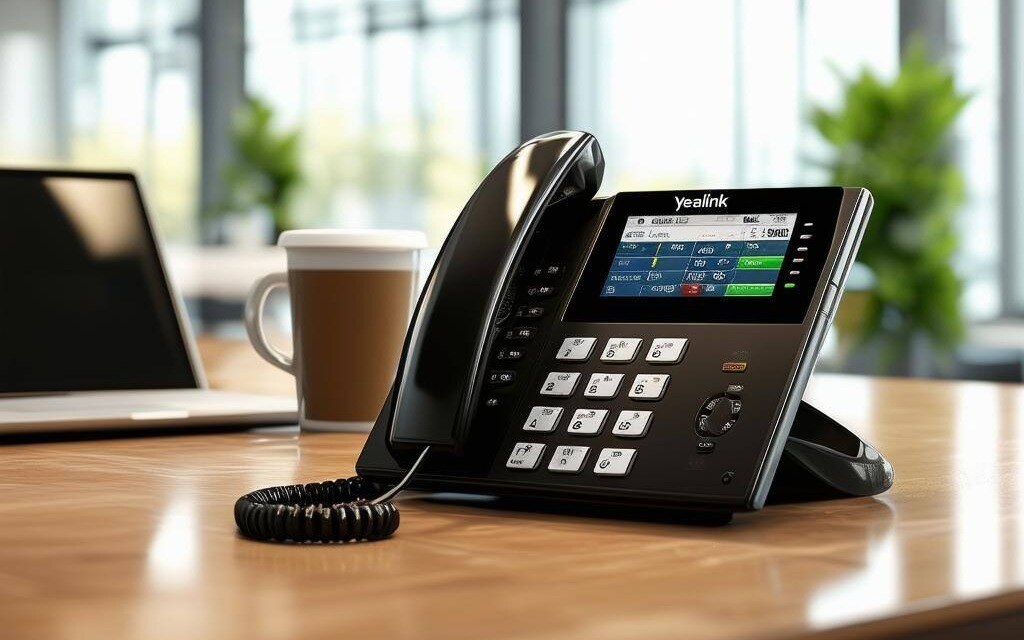10 Things to Know Before Switching VoIP Providers
August 12th, 2024
6 min read

Switching VoIP service providers might not seem like a big deal until something goes wrong. Whether it’s dropped calls, confusing billing, or a support team that’s impossible to reach, the impact on your business can be real and immediate.
If you’re considering making a change, you’re not alone. Many business leaders find themselves reevaluating their telecom partner when service falls short, pricing feels outdated, or their current system no longer fits how their team works.
But before you make the switch, it’s important to understand what you’re really getting into and how to do it right.
At TeleCloud, we’ve guided thousands of businesses through VoIP transitions across every industry, from 5-person firms to multi-location enterprises. We know what works, what breaks, and what questions to ask upfront to ensure a smooth, frustration-free migration.
In this guide, we’ll walk you through the ten most important things to consider before switching your VoIP provider, so you can make the best choice for your team, your budget, and your business goals.
1. Why Would a Business Change VoIP Service Providers?
Businesses typically consider changing their VoIP providers for the following reasons:
-
You are having a bad service experience: Companies often seek a more responsive and supportive service experience. This includes better customer support and a faster / easier service relationship with your provider. Every simple ticket you request for support seems to take multiple days to solve or goes nowhere, thats no way to run a business!
-
You are being over charged: Many businesses are still on outdated pricing models and can benefit from newer, 2025 pricing models. Switching can often lead to significant cost savings and access to the latest promotions and pricing structures. Thematically, you get more and pay less (most of the time!)
-
Your current VoIP system lacks features: The need for a more robust software platform, such as mobile applications, webphones, AI, SMS texting, video collaboration, and call center analytics, can drive a business to switch providers. These features are becoming increasingly essential for modern business communications. Additionally, a modern business phone system is designed for allowing teams to manage calls efficiently across multiple locations. Features like call forwarding enhance communication flexibility, allowing users to redirect calls to different numbers or mobile devices, which is especially useful for businesses with remote workers or multi office locations.
2. What If I’m Still Under Contract with My Current Provider?
If you’re under contract with your current provider, the first step is to review your signed agreement, even if it’s many years old. Check for any early termination fees associated with porting your phone numbers to a different provider. Often, if you’re in your second or third round of auto-renewals with no new paperwork, these fees are absolutely negotiable.
It’s advisable to reach out to your current provider to discuss these terms and get a real termination fee, in advance. If you do not want go through this effort, we can call and email the provider on your behalf as long as we have a signed Letter of Authorization to represent you. There is also specific language to use to get the lowest possible termination fee that we can assist with. We often help customers that select us by covering some or all of the termination fee by giving free month(s) of service when it makes business sense to do so.
3. Can We Reuse the Existing IP Phones That We Already Have?
Reusing existing IP phones depends on ownership and compatibility:
-
Ownership: If you own the devices, you may be able to reuse them. Rented equipment typically must be returned upon contract termination.
-
Compatibility: Common brands like Yealink or Poly are often compatible with new systems. However, older models may lack support for newer features.
Many businesses are transitioning to software-based solutions, reducing reliance on physical hardware and enhancing flexibility.

4. How Do VoIP Service Providers Differentiate?
VoIP providers are like dining at different steakhouses; the core offering might be similar, but the quality of service, ambiance, and overall experience can vary greatly. While many VoIP providers offer similar core functionalities, differences arise in:
-
Software Platforms: User interface and feature sets can vary significantly.
-
Customer Support: Response times and support quality are crucial for uninterrupted operations.
-
Integrations: Compatibility with industry-specific tools like CRMs or ERPs can enhance efficiency.
Selecting a provider that aligns with your business's specific needs ensures a more seamless experience.
5. How Much Does VoIP Service Cost?
Most VoIP services, including TeleCloud, follow a per-user, per-month model: typically ranging from $14.99 to $35.99 based on your feature needs. Plans may include essentials like call routing and voicemail, or advanced tools like AI analytics, texting, video conferencing, and CRM integration.
At TeleCloud, you only pay for what your team actually uses.
IMPORTANT: There will be a one-time setup fee. These non-recurring “scope” or onboarding fees vary by deployment type:
-
Remote Setup: $250–$1,000 (for smaller teams using software only)
-
On-Site Installation: $1,500–$5,000 (includes phones, cabling, routers, and more)
We also offer flexible payment plans and often waive setup fees for clients signing multi-year agreements. It’s all about making high-quality VoIP both accessible and scalable from day one. See the full blog: How Much Does a VoIP Cloud Phone System Cost?
6. How Long Are VoIP Service Agreements Typically?
Most VoIP service agreements range from 12 to 60 months, depending on your business goals, budget, and support needs.
-
Short-Term Contracts (12–24 months): Offer flexibility but usually come with higher monthly costs and fewer discounts on installation or hardware.
-
Long-Term Contracts (36–60 months): Provide lower per-user pricing, waived setup fees, and longer-term price protection, ideal for businesses that want to lock in value and reduce upfront expenses.
We also work with clients to find the right fit, whether you need short-term agility or long-term stability. See our Long-Term Contract Guide!
7. Do I Get to Keep All My Business Numbers?
Yes, most providers support number porting, allowing you to retain:
-
Main Business Numbers
-
Direct Lines
-
Toll-Free Numbers
-
Fax Lines
Ensure that these numbers are registered under your business's name to facilitate a smooth transition.

8. What Are the Most Commonly Used VoIP Features?
Modern VoIP systems offer a range of features to enhance communication:
- Mobile First Calling: Inbound/Outbound business phone calls can easily be managed on your mobile app to protect your personal identity
-
SMS Text Messaging: Enabling business phone numbers for SMS and MMS texting is increasingly common, allowing for more flexible communication with clients.
-
AI Insights: These tools provide valuable insights into the phone conversations with transcriptions
-
Video: Easily use video to communicate with team members. Most clients have some form of platforms like Zoom and Microsoft Teams for external video call and meetings is now a standard expectation.
-
CRM Integration: Connecting VoIP systems with CRM platforms like Teams or Salesforce or industry-specific systems allows for seamless communication and data management.
-
Mobile Applications: Mobile apps for VoIP systems enable employees to make and receive calls from anywhere, supporting a more flexible work environment.
-
Automatic Call Recording: This feature is crucial for monitoring customer interactions and improving team performance.
-
Call Center Software: Best in class call reporting and call routing intelligence to manage your service or sales operations with dashboard level information
*Phone Hardware is not a feature, just a physical calling device. The Features come from the software. Clients that use hardware will get training on how to use the physical instrument but fortunately its very easy and comes with directions.
9. If We Do Switch VoIP Services, How Do We Make Sure the Onboarding Process Goes Well?
To facilitate a successful transition:
-
Assign a Project Leader: Designate a point person to oversee the process.
-
Involve IT Support: Engage your IT team or consultant early to address technical requirements.
-
Conduct a Technical Assessment: Evaluate your current infrastructure to identify necessary upgrades.
-
Plan for Training: Ensure staff are trained on the new system to maximize adoption and efficiency.
A structured approach minimizes disruptions and ensures a seamless transition.
Worried about onboarding? Checkout our blog: What Can Go Wrong During The VoIP Onboarding Process?
10. What Can Go Wrong During the Installation?
Even with the right VoIP provider, installation day can quickly go sideways if key details are overlooked.
Here are the most common issues and how to prevent them:
-
Number Porting Problems: Changing your port date too often or failing to coordinate properly can lead to downtime, dropped calls, or unreachable phone numbers during go-live.
-
Choosing Based on Price Alone: Going with the lowest-cost provider might save you upfront, but poor service, limited features, or lackluster support can end up costing more in the long run.
-
No Technical Prep: Skipping a technical assessment of your internet, network, or cabling can lead to poor call quality, dropped calls, or installation delays.
-
Lack of On-Site Support: If you're deploying physical hardware (like desk phones, routers, or paging systems), make sure the right people are available—either from your provider or your internal IT team—to assist with configuration and testing.
Pro Tip: Schedule a pre-installation on-site survey and confirm roles ahead of time. A little preparation goes a long way in avoiding surprises.
Switching VoIP providers should feel like a win, not a gamble. With the right planning and provider, it absolutely can be.

Make the Switch Without the Stress
Switching VoIP providers isn’t just about upgrading your phone system; it’s about upgrading your entire communication experience.
Yes, there are contracts to navigate, features to evaluate, and timelines to coordinate. But with the right guidance, it doesn’t have to be overwhelming. In fact, when done right, it can be one of the best decisions you make for your business.
At TeleCloud, we’ve helped hundreds of businesses make the switch seamlessly, from single-office teams to multi-location enterprises. Whether you're frustrated with poor support, outdated pricing, or missing features, we’ll help you build a smarter, more future-ready phone system without the guesswork.
Have questions about your setup? Want to see what switching could actually look like? Let’s talk. No pressure. Just real advice from a team who’s done this thousands of times.
vin@telecloud.net OR call/text 908-378-1218
Topics:








